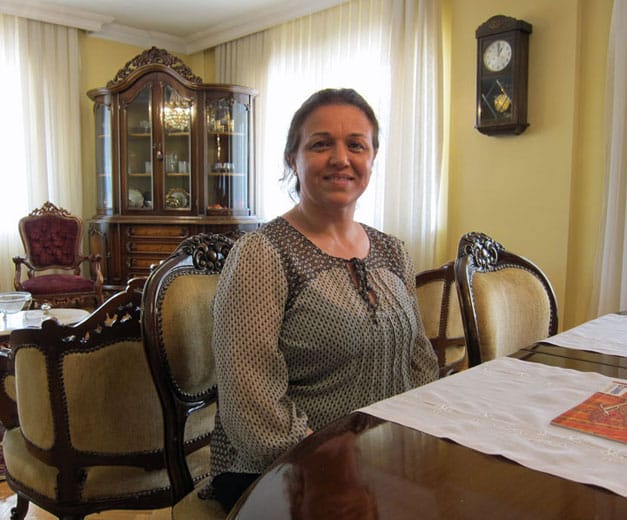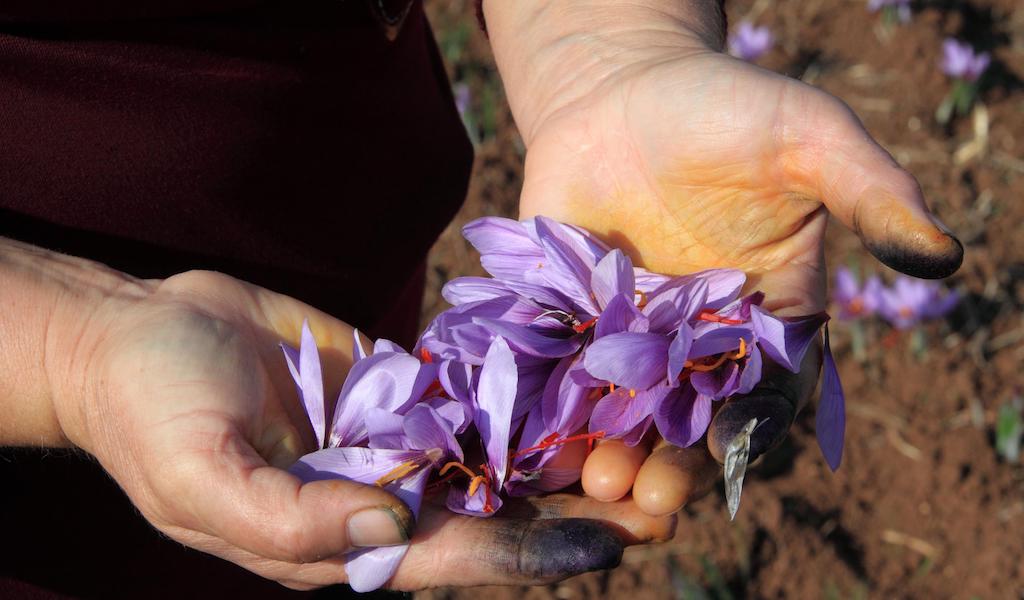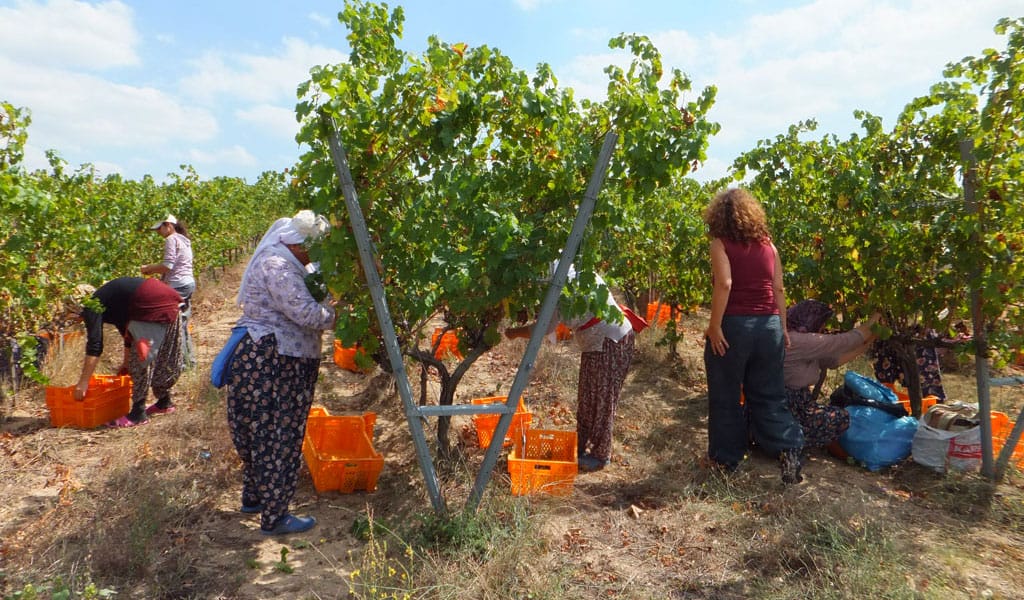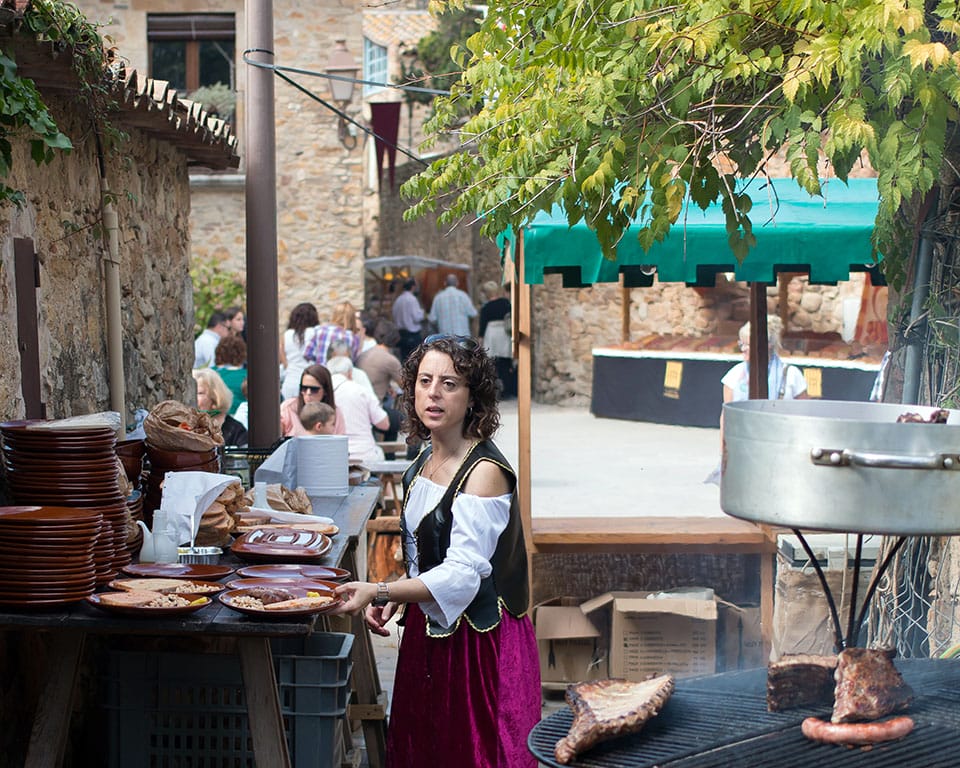The cuisine of Antep deserves every bit of the praise it receives. In the southeastern city known as the gastronomic temple of Turkey, the world’s most refined kebab traditions are obsessively guarded by a cadre of traditional ustas in the local grilling institutions. Baklava workshops are steeped in an odd mixture of science and voodoo that would titillate Willy Wonka himself. But coming down from a grilled meat and sweets binge, the body wants dolma, pilav, börek and çorba – the home-style food that is strangely absent in Antep’s restaurants.
In Istanbul, daily specials in restaurants specializing in ev yemekleri, home food, regularly celebrate the humble, labor-intensive dishes specific to certain regions. Musa Dağdeviren of Çiya has achieved global street cred doing just that, serving nearly forgotten home-cooked oddities from around Turkey, with a heavy dose of his home region, Antep (also known as Gaziantep, or “victorious” Antep, in honor of the role it played in defeating French forces during Turkey’s War of Independence).
The exotic-sounding stuff in Musa’s pots – mumbar (stuffed sheep intestine), pirpirim aşı (purslane stew), güveçte hisik (wheat stew with lamb) – is just a sampling of what’s cooking in homes all over Antep, every day. Frustrated by the teasers at Çiya and the taunts of people from Antep (“You haven’t really eaten in Antep until you’ve been in the homes,” is a common refrain), we sought out home cooks in Antep and finally got a taste of what we’d been missing.
Antep, like most places in Turkey, is no stranger to gentrification. Surveying the city center, it would seem concrete was an endemic species and thriving. Small, charming pockets of the Old City are dotted with caravanserais, and narrow lanes of handsome stone houses crisscross wide roads lined with buildings in the neo-Anatolian look – smoked glass panels masking shoddy construction. We also found some less bewildering commercial sections and some nicely laid out modern neighborhoods with high-rise housing. For better or worse, Antep, like Istanbul, is not an antique city frozen in ash. It’s on the move. But despite the city’s hasty modernization, in the kitchen, the people of Antep are conservative preservationists.
Aygül Hanım welcomed us at the door of her home on the twelfth floor of a modern apartment building in a new part of the city. Her large, spotless apartment was furnished with antique-style furniture, and soft jazz played on cable radio. Aygül excused herself for a bit of frying and returned a few minutes later with long plates in hand. They held zeytin böreği rolled in yufka in an egg roll shape, sliced in two at a sharp angle and placed standing up to display the lovely filler of Kilis green olives, walnuts, parsley and ground lamb. We dragged ours through the arty drizzle of pomegranate molasses on the side of the plate for a tangy kick.
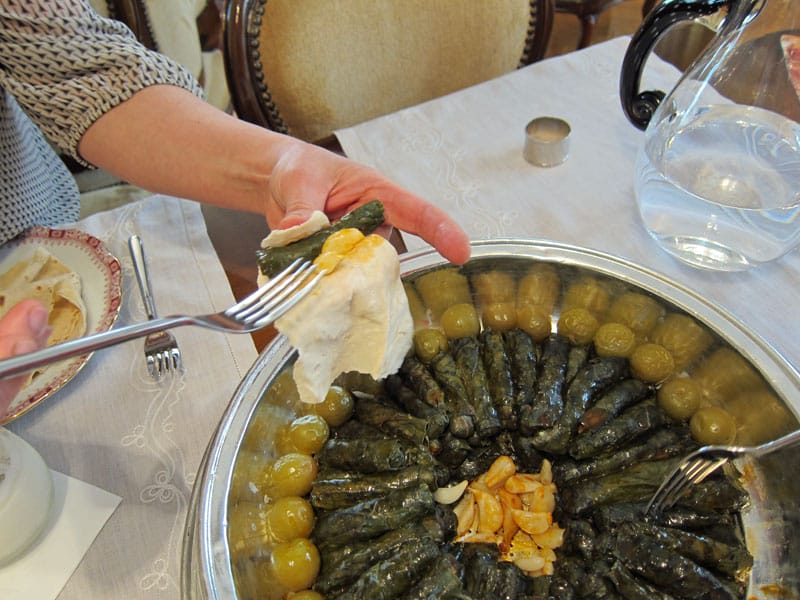
There were grape leaves stuffed with bulgur fanned out carefully in a wide copper bowl and dressed with green erik, or sour plums. These were rolled in lavaş and eaten as a dürüm. We won’t get into the kazan kebabı or the sulu salata on the side, all worthy of their own reviews.
It was a rich yogurt soup called çağla aşı that threw open a window into the Antep kitchen for us. We climbed through and will have difficulty ever looking back again. Çağla are the unripe green almonds that appear in markets all over Turkey in spring, and the ones used for this dish are the first of the season, harvested before the seed forms inside. Aş is an old Turkish word for food. What the name fails to capture is a perfect harmony of çağla, chickpeas and cubed lamb in an eggy yogurt base. Outside of Çiya, we can’t think of a restaurant that would attempt this dish, and even at Çiya we haven’t encountered the perfect balance that Aygül struck. She nailed it.
Before serving, Aygül drizzled clarified butter loaded with haspir (a mild, saffron-colored herb common in Antep) and black pepper into fragrant and colorful pools on the surface of the soup. Rather than churning it up with a spoon like one might after sprinkling red pepper flakes on a rough-and-ready lentil soup, we felt this çağla aşı demanded respect and protocol. We suggest approaching a bowl of çağla aşı like this: carefully spoon out a couple of çağla or chickpeas or some meat, or even a combination of the three, and then capture a little pool of butter and haspir intact. This way, the final union of the ingredients takes place in the mouth. The çağla has a beguiling way of changing flavors; sometimes it tastes a little sour and fruity and other times it seems beany. The butter bath makes the whole experience intoxicating.
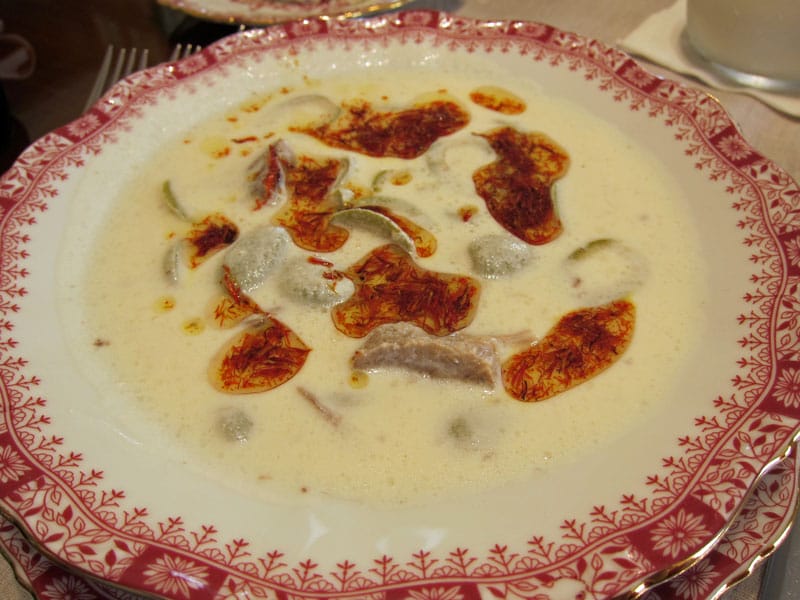
Aygül learned this traditional Antep recipe from her mother-in-law and it remains a family favorite. To her it means spring, and the clarified butter that she gets from Urfa is a little caloric splurge to celebrate the season. Her family has been in Antep for generations, and she remembers eating this dish every spring. In her modern, digitally connected apartment, she could just as easily be replicating what’s on “Top Chef” this week, and she does have adventurous tastes when she goes out. But at home in Antep, at least at this one, preserving local culinary traditions is a joyous, daily occupation. We only wish Aygül would make her food available to the public. Among all of that kebab and baklava, she’d be in a class of her own.
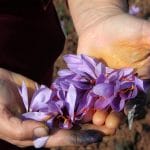 October 6, 2023 Harvest Week
October 6, 2023 Harvest Week
Let us begin with a little Greek mythology. Hermes – son of Zeus, god of thieves and […] Posted in Athens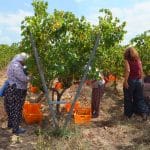 October 5, 2019 Wine Harvest Week
October 5, 2019 Wine Harvest Week
Zeynep Arca Şallıel had a successful career in advertising in Istanbul, but in 1995 she […] Posted in Istanbul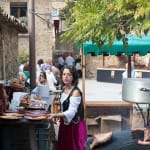 November 20, 2015 CB on the Road
November 20, 2015 CB on the Road
When you live in a medieval town that is as beautifully preserved as the little […] Posted in Barcelona
Published on May 19, 2014
Related stories
October 6, 2023
Athens | By Ilias Fountoulis
AthensLet us begin with a little Greek mythology. Hermes – son of Zeus, god of thieves and commerce and messenger of Olympus – and Krokos, a mortal youth, were best friends. One day, while the two friends were practicing their discus throwing, Hermes accidentally hit Crocus on the head and wounded him fatally. On the…
October 5, 2019
IstanbulZeynep Arca Şallıel had a successful career in advertising in Istanbul, but in 1995 she decided to take on a daunting new challenge: taking part in the revival of small-scale viniculture in the ancient winemaking region of Thrace.“I wanted to do something with soil, something that mattered a little bit more,” she says. Her father…
November 20, 2015
BarcelonaWhen you live in a medieval town that is as beautifully preserved as the little Catalonian hamlet of Peratallada, you are never too old for dress-up. All year round, these worn stone walls and charming plaças effortlessly take visitors back in time to the 10th century. However, on the first weekend of October, the sights, sounds,…







































